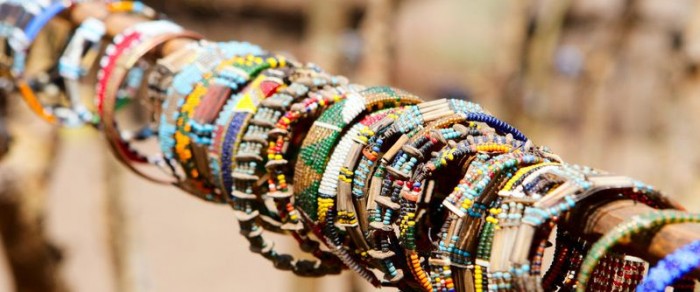How to Distinguish Native American Tribes by Jewelry and Clothing

Customs and traditions have lead us to wear clothes accordingly and the Native American tribes of North America are an excellent example of how different tribes have worn a variety of jewelry clothes throughout centuries. Six particular tribes that were located throughout the continent have worn pieces of clothing and jewelry that can be distinguished and sets them apart whether because of the natural resources available to them or if they wear pieces of clothing a different way to distinguish themselves from each other: Ojibwa, Dakota, Cheyenne, Navajo, Seminole, and the Iroquois.
Most Native American tribes used more or less the same natural resources to make their clothing including deerskins in the form of shirts, leggings, and breechcloths; warm fur layers during the winter; and moccasins to protect and warm the feet.
Ojibwa
The Ojibwa, located in the north and spanning through the states of Michigan, Wisconsin, Minnesota, North Dakota and Quebec, Ontario, Saskatchewan, and Manitoba territories of Canada. The Ojibwa women also wore petticoats and dresses made out of several woven nettle or thistle fibers and used many different natural resources to decorate their clothing including:
- Bones
- Feathers
- Shells
- Megis Shells
- Stones
- Dyed porcupine quills
These natural resources are also used as jewelry by both men and women by tying them to a string to wear as a necklace. Once the Europeans arrived, they introduced the Ojibwa to different materials including textiles like cotton, wool, velvet, and leather. They also wove bandolier bags which are durable cross body bags and worn as a part of their ceremonial outfits.
Sioux
The Sioux Native Americans were located in what today is considered the middle of the United States in the states of Minnesota, Nebraska, South Dakota, North Dakota, Wyoming, and Montana. One thing that sets them apart from other Native American tribes is their heavy use of bison for everything from the meat for food; the skin and fur for clothing and blankets; housing for teepees; bones for tools; hair for ropes; as well as tendons for sewing thread and bow strings.
Cheyenne
They Cheyenne tribes were located and migrated through several different states including Minnesota, Oklahoma, Montana, and other areas of the Great Plains region of the United States. Traditional clothing of the Cheyenne tribe included a lot of ornate decoration with natural resources of deer skin hide, beadwork, and other materials such as elk teeth. The jewelry that the Cheyenne tribes wore and continue to wear as part of their traditional heritage is similar to that of the other Pueblo and Plains Native American tribes.
Navajo
The Navajo tribes located in Arizona, Utah, Colorado, and New Mexico would also wear clothes made of different textiles including cotton and velvet or different styles such as breeches for men and squaw dresses for women. Squaw dresses are made out of dark blankets that were also worn over the shoulders before the Europeans influenced their clothing choices. Navajo women also wore their hair up in a traditional style by pulling it back into a knot in the bank with a headband.
The Navajo tribes are well known for their work with silver metal and turquoise gemstones including rings, bracelets, and belt-plates.
Seminole
The Seminole Native Americans come from the south of the United States in the state of Florida and despite the warm climate, they would dress in long layers. The women wore very long skirts, sometimes all the way to the floor with ruffled areas at the knee along with long-sleeve shirts that sometimes cut off at the midriff along with a shawl over their shoulders. Seminole women have a very long tradition of wearing layers upon layers of long beads. Their collection of beaded necklaces begin when they are born with one strand and will continue to add more to her collection during her lifetime. Seminole men will wear long-sleeved shirts with ruffles the different patches for decorations.
Over the years different styles and trends came into place included a built in belt for men which would be known as the Seminole jacket, shawls and capes with thinner and sheer fabrics, and the incorporation of different patterns including plaid and horizontal stripes.
Iroquois
The Iroquois tribes can traced back to area where the most north-eastern states including upstate New York and some parts of Ontario. Again, traditional clothing was made from deer skin and both men and women wore leggings and moccasins. Women would wear very long skirts or dresses to cover the length of the leggings and men wore tunics. Additional clothing including smocks were worn during the colder months. Face paint and tattoos were very common and women would often wear beaded necklaces.
As you can see, there are many different Native American jewelry hallmarks along with different clothing styles that set each tribe a part in some way based on geographic regions and tradition. From the north to the south and east to the west, you are now able to distinguish Native American tribes’ traditional jewelry and clothes.
You may also like ...
- Elegant Costume Jewelry For This Fall
- Fun Jewelry Trends For Fall 2013 To Amp Up Your Style
- How To Not Overdo Jewelry With A Strapless Dress
- A Crown Jewels Worth And The History You Don’t Know
- Revisiting The Oscar's Jewelry Since 2000: Pearls, Metals, Gemstones, And Bold Trends
- Matching Your Jewelry to Your Outfits: How to Color-Coordinate Your Accessories this Spring














